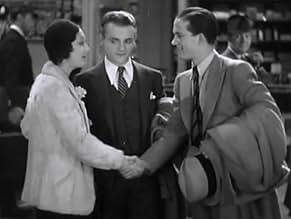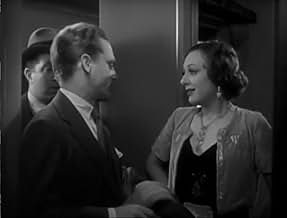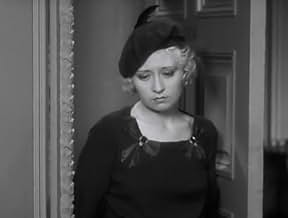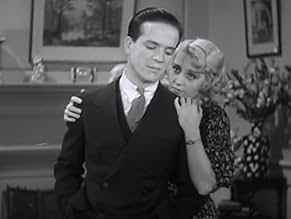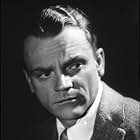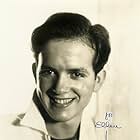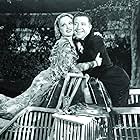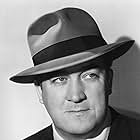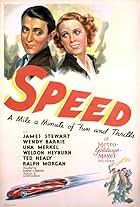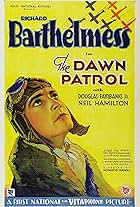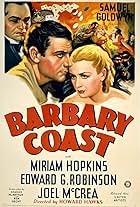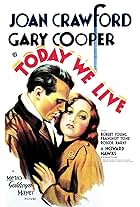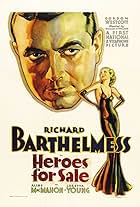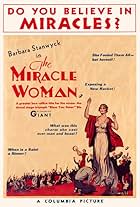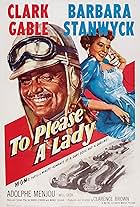IMDb RATING
6.2/10
1.5K
YOUR RATING
Race car driver becomes overprotective of his brother when he decides to become a racer as well.Race car driver becomes overprotective of his brother when he decides to become a racer as well.Race car driver becomes overprotective of his brother when he decides to become a racer as well.
- Awards
- 1 nomination
Jack Brisco
- Jack Brisco
- (uncredited)
James P. Burtis
- Red - Joe's Mechanic
- (uncredited)
Ralph Dunn
- Racetrack Official
- (uncredited)
Storyline
Did you know
- TriviaStock footage was temporarily removed from this one to be used in the remake, Indianapolis Speedway (1939); when it was replaced back into this film's negative, some of the "Indianapolis Speedway" footage got mixed in with it, so that you now see 1939 footage in a 1932 film, including shots of a late 1930s ambulance and automobiles as well as racing announcers Wendell Niles, John Conte and Reid Kilpatrick, who did not appear in the film as it was originally released.
- GoofsA Santa Fe Railroad car is being shown unloading in Indianapolis, Indiana. That railroad only operated as far east as Chicago, Illinois.
- Quotes
Anne Scott: I didn't hear you knock?
Joe Greer: Since when is a dame like you expect guys to knock?
- Alternate versionsOriginally at 85 minutes, the only available prints of "The Crowd Roars" have a running time of only 70 minutes. Even Warner Brothers only offers the 70 minute version for sale. The oddest gap in the plot in the 70 minute version, is how Joe Greer (James Cagney) suddenly ends up behind the wheel of his brother Eddie's car in the big race after Eddie got hurt and couldn't finish the race, when last we saw Joe he was down and out in girlfriend Lee's (Ann Dvorak) apartment.
- ConnectionsAlternate-language version of La foule hurle (1932)
Featured review
THE CROWD ROARS (Warner Brothers, 1932), directed by Howard Hawks, is a fast-pace drama revolving around auto racing at the Indianapolis speedway as indicated prior to the opening credits with racing cars speeding down the track as one goes out of control, causing the crowd at the grand stand to rise from their seats and, hence the title, the crowd roars! Starring James Cagney, whose gangster/tough guy image emerged with his ground breaking title role as THE PUBLIC ENEMY (1931), continues to play a tough guy, this time from behind the wheel aiming for the finish line.
The story, written by its director, with screen adaptation by Kubec Glasmon, John Bright, Seton I. Miller and Niven Bush, finds Joe Greer (James Cagney), a three time Indianapolis driving champion, returning to his home town by train to meet with his kid brother, Eddie (Eric Linden) and Pop (Guy Kibbee), whom he hasn't seen in four years. Although loved by his mistress, Lee Merrick (Ann Dvorak - in her Warner Brothers debut), and much to her resentment, Joe intends on keeping their relationship a secret. However, Eddie, who hero worships Joe, wants to be a race car driver just like him. At first Joe tries to discourage him, but eventually paves the way for him in the racing game. Their relationship as brothers falters when Eddie encounters Lee's best friend, Ann Scott (Joan Blondell), a woman with a reputation. Going against Joe's orders, Ann goes after Eddie in spite, but instead, falls in love and marries him. During one of their races, Spud Connors (Frank McHugh), Joe's relief driver and best friend, tries to prevent the feuding brothers from going against each other on the track by driving between them, but is killed in the process, causing Joe to hit the skids while Eddie takes Joe's former title as championship racer. Regardless of how he put her aside, Lee makes every effort to locate Joe, who has disappeared from view.
Also appearing in the cast are Charlotte Merriam (Ruth Connors); Ronnie Cosbey (Mike Connors); and Edward McWade (Tom Beal), whose roles go without credit. Guy Kibbee, who seems to have appeared in every Warner Brothers production at that time, is seen only during the film's initial 10 minutes, by which then his Pop Greer character drifts out of the story and never seen or mentioned again.
THE CROWD ROARS has the great distinction for having its racing scenes filmed on location at Indianapolis at Ventura and Ascot race tracks rather than rear projection from inside of the studio, as well as having actual auto drivers, William Arnold, Ralph Hepburn, Leo Nomis, Stubby Stubblefield and Shorty Cantlon, appearing briefly as themselves, some whose scenes are handicapped by their weak acting. As much as the leading actors work well together, particularly the conceded Cagney along with the weakling kid brother-type, Linden. it seems a pity that the individual dramatic scenes enacted by Ann Dvorak and Joan Blondell were not handled on a more natural or convincing level. Their emotional screeching outbursts (Blondell's repeated lines to Cagney, "Tell him!") weakens what what might emerged as one of the film's strong points. This sort of "over-the-top" acting might have been common practice at the time, considering how director Hawks worked the same method on Dvorak's emotions opposite Paul Muni in the crime drama, SCARFACE (United Artists, 1932). Later in 1932, Dvorak appeared in possibly her finest performance captured on film in THREE ON A MATCH opposite Joan Blondell, while Blondell and Linden would re-team again in the rarely seen BIG CITY BLUES, where Linden was the central character.
In 1938, Metro-Goldwyn-Mayer produced a film titled THE CROWD ROARS starring Robert Taylor and Maureen O'Sullivan, which was not a remake but another well made sports theme revolving around professional boxing. However, Warners did remake its own CROWD ROARS as INDIANAPOLIS SPEEDWAY (1939) starring Pat O'Brien, Ann Sheridan, Gale Page, John Payne in the Cagney, Blondell, Dvorak and Linden roles, with Frank McHugh playing "Spud" Connors once again. Comparing both films, whenever presented on Turner Classic Movies, the remake, being 15 minutes longer than the original's 70 minute length, plays better acting wise by its actresses, though the earlier version is better served due to the charisma of Cagney, which explains why the original played longer on commercial television in the New York City area up to the mid 1980s than INDIANAPOLIS SPEEDWAY, which ceased TV circulation around the late 1960s. Besides some good racing sequences and cast of familiar Warner Brothers stock players, THE CROWD ROARS is rather ordinary material made good by Cagney's dynamic appeal. (***)
The story, written by its director, with screen adaptation by Kubec Glasmon, John Bright, Seton I. Miller and Niven Bush, finds Joe Greer (James Cagney), a three time Indianapolis driving champion, returning to his home town by train to meet with his kid brother, Eddie (Eric Linden) and Pop (Guy Kibbee), whom he hasn't seen in four years. Although loved by his mistress, Lee Merrick (Ann Dvorak - in her Warner Brothers debut), and much to her resentment, Joe intends on keeping their relationship a secret. However, Eddie, who hero worships Joe, wants to be a race car driver just like him. At first Joe tries to discourage him, but eventually paves the way for him in the racing game. Their relationship as brothers falters when Eddie encounters Lee's best friend, Ann Scott (Joan Blondell), a woman with a reputation. Going against Joe's orders, Ann goes after Eddie in spite, but instead, falls in love and marries him. During one of their races, Spud Connors (Frank McHugh), Joe's relief driver and best friend, tries to prevent the feuding brothers from going against each other on the track by driving between them, but is killed in the process, causing Joe to hit the skids while Eddie takes Joe's former title as championship racer. Regardless of how he put her aside, Lee makes every effort to locate Joe, who has disappeared from view.
Also appearing in the cast are Charlotte Merriam (Ruth Connors); Ronnie Cosbey (Mike Connors); and Edward McWade (Tom Beal), whose roles go without credit. Guy Kibbee, who seems to have appeared in every Warner Brothers production at that time, is seen only during the film's initial 10 minutes, by which then his Pop Greer character drifts out of the story and never seen or mentioned again.
THE CROWD ROARS has the great distinction for having its racing scenes filmed on location at Indianapolis at Ventura and Ascot race tracks rather than rear projection from inside of the studio, as well as having actual auto drivers, William Arnold, Ralph Hepburn, Leo Nomis, Stubby Stubblefield and Shorty Cantlon, appearing briefly as themselves, some whose scenes are handicapped by their weak acting. As much as the leading actors work well together, particularly the conceded Cagney along with the weakling kid brother-type, Linden. it seems a pity that the individual dramatic scenes enacted by Ann Dvorak and Joan Blondell were not handled on a more natural or convincing level. Their emotional screeching outbursts (Blondell's repeated lines to Cagney, "Tell him!") weakens what what might emerged as one of the film's strong points. This sort of "over-the-top" acting might have been common practice at the time, considering how director Hawks worked the same method on Dvorak's emotions opposite Paul Muni in the crime drama, SCARFACE (United Artists, 1932). Later in 1932, Dvorak appeared in possibly her finest performance captured on film in THREE ON A MATCH opposite Joan Blondell, while Blondell and Linden would re-team again in the rarely seen BIG CITY BLUES, where Linden was the central character.
In 1938, Metro-Goldwyn-Mayer produced a film titled THE CROWD ROARS starring Robert Taylor and Maureen O'Sullivan, which was not a remake but another well made sports theme revolving around professional boxing. However, Warners did remake its own CROWD ROARS as INDIANAPOLIS SPEEDWAY (1939) starring Pat O'Brien, Ann Sheridan, Gale Page, John Payne in the Cagney, Blondell, Dvorak and Linden roles, with Frank McHugh playing "Spud" Connors once again. Comparing both films, whenever presented on Turner Classic Movies, the remake, being 15 minutes longer than the original's 70 minute length, plays better acting wise by its actresses, though the earlier version is better served due to the charisma of Cagney, which explains why the original played longer on commercial television in the New York City area up to the mid 1980s than INDIANAPOLIS SPEEDWAY, which ceased TV circulation around the late 1960s. Besides some good racing sequences and cast of familiar Warner Brothers stock players, THE CROWD ROARS is rather ordinary material made good by Cagney's dynamic appeal. (***)
- How long is The Crowd Roars?Powered by Alexa
Details
- Release date
- Country of origin
- Language
- Also known as
- The Roar of the Crowd
- Filming locations
- Nutley Velodrome, Nutley, New Jersey, USA(night board track racing)
- Production company
- See more company credits at IMDbPro
Box office
- Gross US & Canada
- $1,142,320
- Gross worldwide
- $1,676,420
- Runtime1 hour 25 minutes
- Color
- Sound mix
- Aspect ratio
- 1.37 : 1
Contribute to this page
Suggest an edit or add missing content



